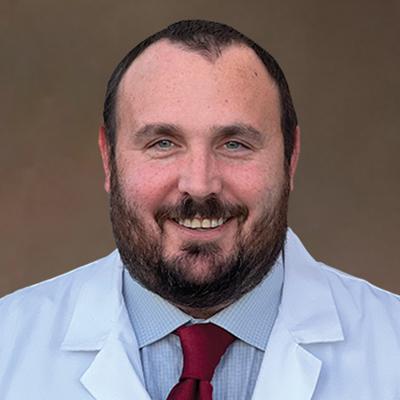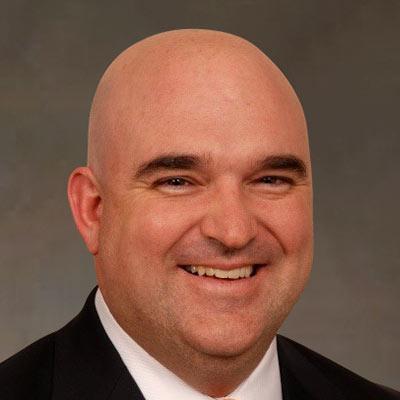Online Guide To Outpatient Joint Replacement

Our exceptional joint replacement doctors at Orthopaedic Associates, the region’s most preferred orthopaedic practice, are proud to offer outpatient joint procedures to the residents of Fort Walton Beach, Destin, Niceville, Crestview, Panama City, and the surrounding areas.
Outpatient joint replacement procedures enable patients to return home on the same day as their surgery, promoting a comfortable recovery in a familiar environment. Our specialty-trained joint replacement surgeons perform these procedures, developing individualized treatment plans to help patients achieve optimal outcomes. Utilizing minimally invasive techniques, our experts specialize in a wide range of same-day outpatient procedures, including:
- Anterior hip replacement
- Partial knee replacement
- Posterior hip replacement
- Reverse total shoulder replacement
- Robotic-assisted joint replacement
- Total hip replacement
- Total knee replacement
- Total shoulder replacement
At Orthopaedic Associates, we are dedicated to providing orthopaedic excellence in outpatient joint surgery and helping patients experience relief while recovering in a trusted environment.
Our Outpatient Joint Replacement Experts
With extensive experience in joint replacement surgery, our outpatient joint replacement surgeons, Dr. Mark Tenholder, Dr. James Watt, Dr. T. Jacob Seales, Dr. David Dean, Dr. Jake Hawkins, Dr. Mark Awantang, Dr. Nicholas Crossman, and Dr. Chad Mitchell, follow leading patient-centered care protocols and utilize the most effective and proven outpatient procedures to support a successful recovery. Each of our specialists proudly focuses their efforts on getting you back to the activities you love.
Benefits of Outpatient Joint Replacement
Patients undergoing outpatient joint replacement can experience several advantages, including:
![]()
Same-Day Discharge: Generally, patients can begin recovery at home on the same day as surgery.
![]()
Lower Costs:Outpatient procedures can be more affordable than traditional inpatient joint replacement surgeries.
![]()
Reduced Risk of Infection: Ambulatory surgery centers offer controlled environments that help minimize infection risks.
![]()
At-Home Recovery: Recovering at home provides comfort in a familiar environment.
Who Is a Good Candidate?
Outpatient joint replacement may be a good option if you exhibit the following:
![]()
Active Lifestyle: Ideal for active individuals who are limited by joint pain.
![]()
Independent Mobility: Capable of walking independently or with minimal assistance prior to surgery.
![]()
Good Overall Health: Can undergo surgery and participate in postoperative physical therapy without health risks.
![]()
Home Support: You have a strong support system of family or friends to assist during recovery at home.
![]()
No History of Serious Infections: No significant past infections that would increase the risks during surgery.
What to Expect
Preoperative Preparation
Preoperative preparation includes a comprehensive assessment to ensure you are suitable for the procedure, as well as modifications needed at home to facilitate a safe recovery.
Preparation
- Understand Your Procedure: Have a thorough discussion with your doctor to fully grasp the details of your surgery, including potential risks and recovery expectations. Take advantage of any educational sessions offered to help you prepare.
- Set Up a Safe Recovery Space: Arrange your home to support a smooth and comfortable recovery. Remove tripping hazards like loose rugs, install grab bars in the bathroom, and ensure clear pathways for mobility aids. Stock up on essential supplies, including prescribed medications, ice packs, and other recommended items.
- Plan for Assistance: Ensure you have reliable support for the first few days after surgery. Whether from family, friends, or a professional caregiver, having help readily available will make recovery easier.
Prehabilitation
- Optimize Your Health: Take proactive steps to improve your overall health before surgery. If you smoke, quitting in advance can promote healing and lower infection risks. Discuss any preexisting medical conditions with your doctor to ensure they are well-managed.
- Strengthen with Prehabilitation: Engage in presurgery exercises to build strength and flexibility, which can contribute to a smoother recovery. Work with your doctor or physical therapist to develop a program tailored to your needs.
The Surgical Procedure
When compared to traditional joint replacement surgery, outpatient joint replacement offers patients more convenience as well as a quicker recovery. Here’s what you need to know for the day of your surgery:
- Arrival and Preparation: Once at the surgery center, your care team will greet you. Nurses then prepare you for the procedure by checking vital signs and administering any necessary medications.
- Anesthesia: Regional anesthesia may be used to numb the area around the joint by blocking nerve signals, along with medication to keep you in a light sleep. In some cases, general anesthesia may be used, causing temporary unconsciousness.
- The Surgery: Your surgeon begins with a small incision to access the joint with minimal disruption. They then remove damaged bone and cartilage and replace them with an artificial implant before closing the incision with sutures or staples. The procedure normally lasts a few hours.
- Recovery and Discharge: Following surgery, you’ll be monitored for pain management and stability. Once you meet specific criteria, like walking with assistance, you’ll be discharged home later the same day.
Please note that this is a general overview. Your doctor will go over the specific details of your surgery in advance, including any possible variations in the procedure.
Postoperative Care & Recovery
As you begin your recovery at home, the focus will be on pain management and rest. Remember these tips and priorities as you recover and rehabilitate:
- Manage Pain and Incision Care: Listen to your doctor’s instructions for pain medication and use ice to reduce discomfort. Keep your incision clean and dry, and only shower or bathe when cleared by your doctor.
- Plan for Physical Therapy: Physical therapy is a crucial aspect of recovery. Your therapist will guide you through exercises to strengthen your joint, improve mobility, and regain confidence in daily activities. Stay consistent with your program and communicate any concerns.
- Slowly Resume Activities: Light and controlled movement is key to recovery. You will likely use a walking aid like a cane or walker and slowly increase activity under your therapist’s guidance. Over time, you’ll return to normal tasks.
Be patient with your recovery and remember that it’s a gradual process. Take time to celebrate your wins and always listen to your body.
Rehabilitation & Physical Therapy
While recovering after outpatient joint replacement physical therapy will have a major role in rebuilding your strength, flexibility, and mobility. Here’s what you can expect:
- Within a day or two after surgery, a physical therapist will likely visit you to begin your rehabilitation journey. They will assess your initial movement and pain levels before guiding you through gentle exercises designed to reduce stiffness and improve circulation.
- Your physical therapist will develop a personalized rehabilitation plan designed to meet your needs and progress. As you regain strength and confidence, the program will gradually become more advanced. It may include stretching, strengthening exercises, and practicing daily activities using assistive devices such as canes or walkers.
- To help you regain independence, therapy will incorporate movements that mimic real-life activities, such as standing up from a chair, climbing stairs, or reaching for objects.
- Physical therapy sessions typically continue for several weeks or months after surgery. As you improve, session frequency will decrease, but your therapist will remain a valuable resource to address any questions or concerns.
Communication is key—always let your therapist know if you experience pain or discomfort during exercises. They can work with you to modify your program to provide a safe and effective recovery, helping you achieve the best possible outcome.
Lifestyle & Home Adjustments
Recovering at home after outpatient joint replacement requires a few adjustments to your routine and living space. Here’s what to expect:
- Temporary Limitations: At first, you’ll need to avoid strenuous activities and heavy lifting. Your doctor and physical therapist will provide clear guidelines on movement and weight-bearing limitations.
- Home Adjustments: Enhancing safety in your home can support a smoother recovery. Safety measures may include installing grab bars in the bathroom, raising your toilet seat, and removing throw rugs. Assistive tools like grabbers/reachers can also make daily tasks easier.
- Prioritizing Self-Care: Focus on rest and proper nutrition to aid healing. Delegate household tasks when possible so you can conserve energy for physical therapy and recovery exercises.
- Gradual Return to Activities: As you begin to regain your strength and mobility, slowly ease back into daily routines, hobbies, and social outings. Pay attention to your body’s signals and avoid overexertion.
Don’t forget your doctor and physical therapist are there to support you every step of the way, always feel free to ask questions or voice any concerns.
Advanced Outpatient Joint Replacement Procedures
As the region’s most preferred orthopaedic practice, our team of joint replacement specialists offers advanced procedures for the hip, knee, and shoulder, and they are committed to providing personalized treatment plans dedicated to your individual needs.
Treatments Include:
Frequently Asked Questions
What is outpatient joint replacement?
Outpatient joint replacement is a same-day surgical procedure where patients receive a new joint and return home to recover in a comfortable, familiar environment.
Who is a good candidate for outpatient joint replacement?
Ideal candidates are generally in good health, maintain an active lifestyle, can move independently, have a strong support system at home, and have no history of severe infections.
How should I prepare for surgery?
Preparation includes consulting with your doctor to understand the procedure, optimizing your overall health, creating a safe and accessible recovery space at home, and arranging reliable assistance for the initial recovery period.
Do I need to stop taking any medications before surgery?
Your doctor will provide specific instructions regarding medication adjustments. In some cases, blood thinners and certain other medications may need to be paused before surgery.
Will I need physical therapy before or after surgery?
Presurgery exercises (prehabilitation) may be recommended to help improve strength and flexibility, making recovery smoother. Post-surgery physical therapy is typically essential for restoring mobility and function.
How long does the procedure take?
Surgery duration varies by joint and complexity but typically lasts a few hours. Your surgeon will provide specific details based on your case.
How long does recovery take?
Recovery timelines differ for each patient, but most individuals regain mobility within weeks, with full recovery taking a few months. Your surgeon will outline a personalized recovery plan.
Will I experience pain after surgery?
Some discomfort is expected, but pain management strategies, including prescribed medication, ice therapy, and elevation, will help keep you comfortable.
When can I return to work and daily activities?
Your return to normal activities depends on the type of surgery, your job demands, and your recovery progress. Your doctor will provide tailored guidance based on your healing process.
What kind of support will I need at home?
You may need assistance with basic tasks such as walking, meal preparation, and daily activities for the first few days post-surgery.
How can I set up my home for a smooth recovery?
Create a recovery-friendly space by removing tripping hazards, installing grab bars in key areas, keeping essentials within easy reach, and obtaining any assistive devices you may need, such as a grabber.
When should I follow up with my doctor?
Most patients have a follow-up visit within the first one to two weeks post-surgery to monitor progress. Attending all scheduled check-ups is crucial for a successful recovery.
From Our Patients
Additional Resources
For further information on joint replacement experts, treatment options, and more, please reference the resources at the institutions linked below.

















